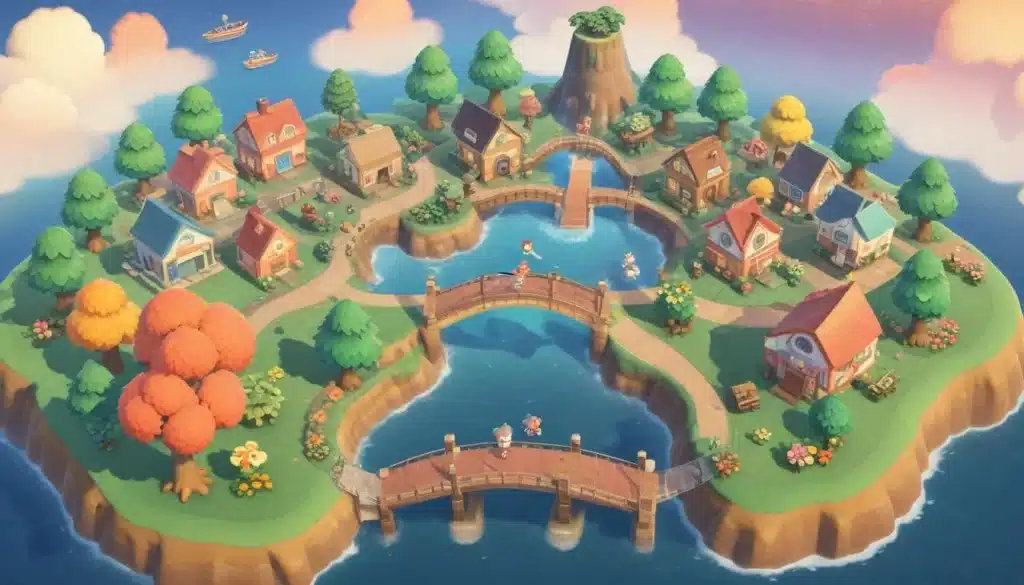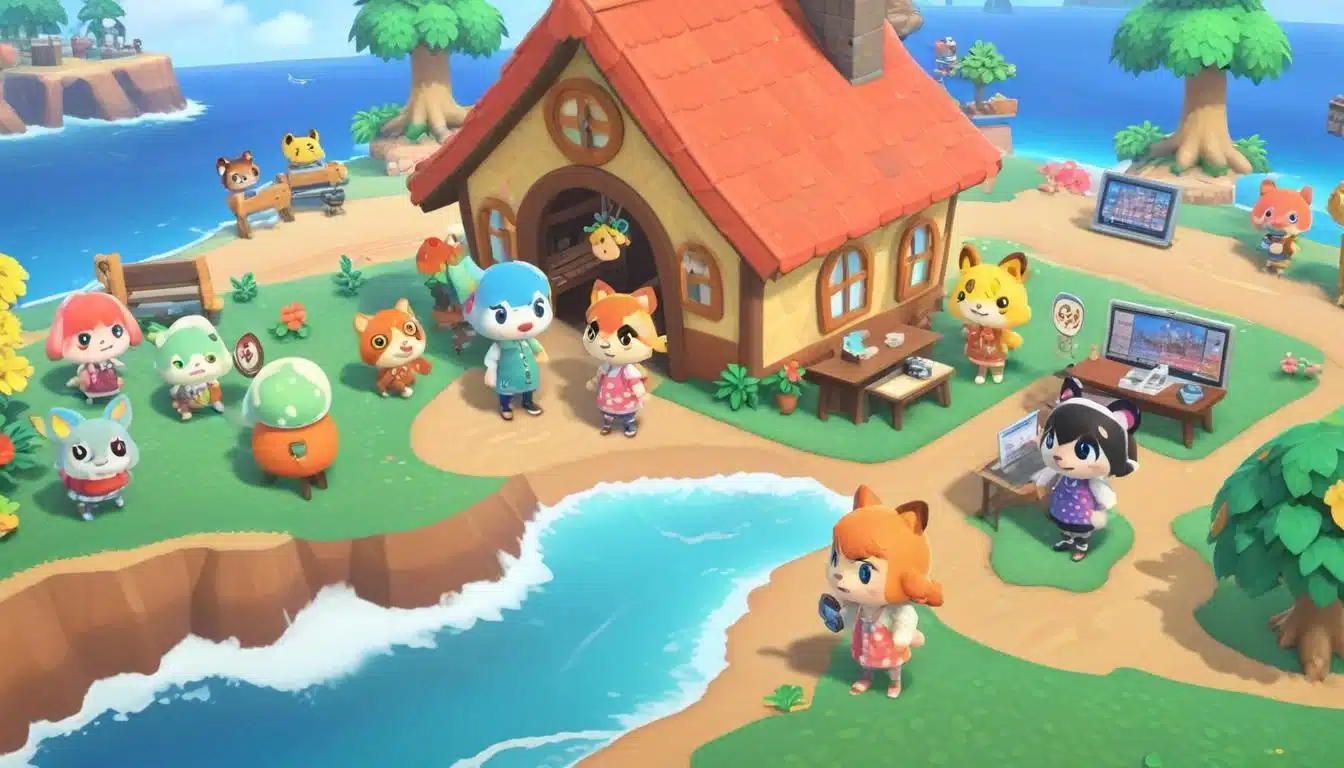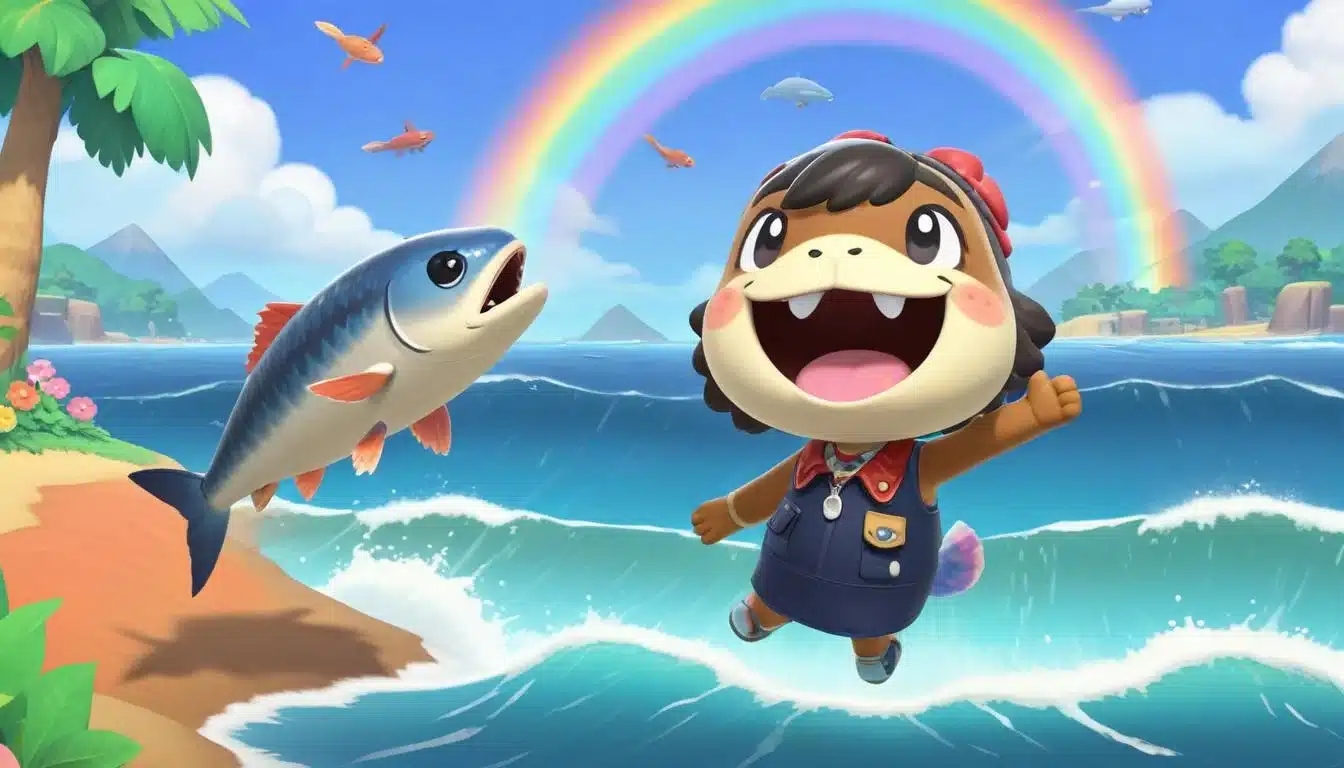Master Animal Crossing: New Horizons – Earn Bells & Upgrade Fast

Mastering the economy and development in Animal Crossing: New Horizons requires a strategic approach to earning Bells and efficiently upgrading your island, which is key to unlocking all game features and creating your personalized paradise.
Are you ready to truly Master Animal Crossing: New Horizons? This beloved life simulation game on the Nintendo Switch offers endless possibilities for creativity and customization, but to truly transform your island into the paradise you envision, you’ll need a steady stream of Bells and a clear strategy for upgrades. This guide will equip you with the essential tips and tricks to rapidly accumulate wealth and accelerate your island’s development, turning your dreams into reality faster than ever.
Understanding the Bell Economy: Your Island’s Financial Backbone
The foundation of any successful island in Animal Crossing: New Horizons is a robust Bell economy. Bells are the primary currency, used for everything from paying off your home loan to purchasing furniture, clothing, and even entire infrastructure projects. Without a consistent income, your progress will inevitably slow.
Many new players might find themselves struggling to make ends meet, especially in the early stages of the game. However, with a bit of planning and consistent effort, you can turn your island into a Bell-generating powerhouse. It’s not just about grinding; it’s about smart, sustainable strategies that fit into your daily gameplay routine.
Prioritizing Daily Tasks for Maximum Bell Returns
Each day presents new opportunities for Bell income. Establishing a routine that maximizes these daily returns is crucial for steady growth. Think of it as your daily financial check-up for the island. Consistency is key, even if you only have a short amount of time to play.
- Fossil Hunting: Dig up all six daily fossils. Have Blathers assess them, then sell duplicates to Nook’s Cranny. Each fossil can fetch a significant amount, often between 1,000 to 6,000 Bells.
- Rock Smashing: Hit all rocks on your island. One rock will be your “money rock,” yielding up to 16,100 Bells if hit correctly (eight times without moving). Other rocks provide valuable crafting materials or iron nuggets.
- Message in a Bottle: Always check your beaches for DIY recipes in bottles. While not direct Bell income, learning new DIYs can lead to crafting valuable items for sale or trade.
By diligently performing these simple tasks daily, you lay a strong foundation for your Bell savings. These are low-effort, high-reward activities that require minimal investment of your in-game time, making them perfect for starting your Bell accumulation journey.
Turnip Trading: The Risky but Rewarding Stalk Market
The Stalk Market, run by Daisy Mae every Sunday morning, is arguably the fastest way to earn millions of Bells in Animal Crossing: New Horizons, but it also carries the highest risk. Understanding how the turnip prices fluctuate is paramount to success. It’s a weekly gamble, but one that can pay off handsomely if played smart.
Daisy Mae sells turnips until noon on Sundays. Their prices vary each week, and once bought, they must be sold before the following Sunday, or they’ll spoil and become worthless. Nook’s Cranny offers two turnip prices daily: one before noon and one after noon. These prices change randomly, following several potential patterns.
Analyzing Turnip Price Patterns
There are four main turnip price patterns: fluctuating, decreasing, small spike, and large spike. Predicting these patterns can be challenging, but many online tools and communities exist to help players track and predict their island’s prices.
- Fluctuating Pattern: Prices will rise and fall throughout the week, with no clear peak.
- Decreasing Pattern: Prices will steadily drop all week, resulting in a loss unless you sell very early.
- Small Spike Pattern: Prices will rise moderately for a day or two, then fall.
- Large Spike Pattern: This is the holy grail, where prices soar to exceptionally high levels (often 300-600+ Bells per turnip) for a short period, offering massive profits.
The key to maximizing turnip profits often involves visiting other players’ islands where prices are high. Online communities (like Reddit’s r/acturnips or various Discord servers) are invaluable resources for finding these opportunities. Always be respectful and follow any rules set by the host islander.
Fishing and Bug Catching: Seasonal Riches


Beyond daily tasks and the Stalk Market, fishing and bug catching remain reliable and enjoyable ways to earn Bells. Their profitability is heavily influenced by the time of day, season, and weather, as rarer and more valuable specimens appear under specific conditions. This adds a layer of strategic thinking to your collecting efforts.
Always remember to donate the first of every new species to Blathers for your museum. After that, focus on selling the most valuable ones. Keeping an eye on your local Nook’s Cranny’s “hot item” of the day can also reveal opportunities to sell specific crafted items or raw materials for double their usual price.
Targeting High-Value Catches
Not all fish and bugs are created equal in terms of Bell value. Learning which ones to prioritize will significantly boost your income. Some creatures are consistently valuable, while others are only worth catching for museum donations or specific crafting recipes.
- Rare Fish: Look for large shadows in the ocean during rain (Coelacanth) or river mouths (Sturgeon). Sharks appear in the summer.
- Rare Bugs: Tarantulas and Scorpions appear at night, especially on mystery islands that have been cleared of other bugs and flowers. Atlas Moths and Golden Stags are also highly valuable.
- Deep-Sea Diving: Catching sea creatures offers another consistent income stream, with some, like the Giant Isopod or Horseshoe Crab, fetching high prices.
Consider dedicating specific play sessions to targeting these high-value creatures. For instance, creating a “tarantula island” on a mystery tour is a well-known method for quickly filling your inventory with high-priced bugs, though it requires some preparation and patience.
Orchard and Garden Management: Cultivating Wealth
Establishing an efficient orchard and garden is a passive yet consistent way to generate Bells. Your native fruit sells for 100 Bells each, but non-native fruits sell for 500 Bells. This difference alone makes cultivating a diverse orchard incredibly profitable. Furthermore, growing pumpkins and other produce adds another layer of income.
To get non-native fruits, you’ll need to visit friends’ islands, use Nook Miles Tickets to random islands, or receive them in gifts from villagers or your in-game mom. Once you have a single fruit, plant it, and in a few days, you’ll have a tree that yields three fruits every few days. This cycle can quickly lead to a large, productive orchard.
Optimizing Your Crop Yields
Just planting fruit trees and vegetables is a good start, but optimizing their layout and care can further boost your profits. Efficient spacing allows for easier harvesting, and understanding growth cycles helps you plan your sales.
- Fruit Tree Layout: Plant trees with at least one space between them in all directions to ensure all fruits fall and are accessible. A grid pattern often works best.
- Pumpkin Farming: Pumpkins grow in three stages, and watering them daily increases their yield. Gold pumpkins are the most valuable. Plant them in large patches for maximum efficiency.
- Hybrid Flowers: While not a direct Bell source, hybrid flowers can attract rare bugs, which can then be sold for Bells. They also add beauty to your island, contributing to its star rating.
A well-maintained orchard and garden not only provide a steady income but also contribute to the overall aesthetic and appeal of your island, indirectly helping with your island’s star rating and attracting more visitors.
Nook Miles and Customization: Beyond Bells
While Bells are crucial for most upgrades, Nook Miles serve a different but equally important purpose. They are earned by completing various in-game achievements and can be redeemed for exclusive items, Nook Miles Tickets (essential for mystery island tours), and important infrastructure upgrades like new bridges and inclines. These upgrades are vital for customizing your island’s layout and accessibility.
Focus on completing daily Nook Miles+ tasks, which refresh throughout the day and offer bonus miles for simple activities. Regularly checking your Nook Phone for completed achievements will also reward you with large sums of miles. Don’t underestimate the value of these miles; they unlock many features that Bells alone cannot.
Strategic Use of Nook Miles
Deciding how to spend your Nook Miles strategically can significantly impact your island’s development pace. Some purchases are more critical early on, while others can wait until you’ve established a solid Bell income.
- Nook Miles Tickets: Use these to visit mystery islands, which can provide non-native fruits, new villagers, valuable materials, and sometimes even rare bugs/fish.
- Pocket Organization Guide: This is an essential early purchase, expanding your inventory space and making resource gathering much more efficient.
- Pro Decorating License: Unlocks advanced decorating options, allowing for more creative island designs.
Remember that Nook Miles are also used for various infrastructure projects. When Tom Nook offers to build a bridge or incline, the initial cost is often in Nook Miles, though villagers can contribute Bells. Prioritize these projects to improve navigation and aesthetics.
Advanced Strategies and Community Engagement


Once you’ve mastered the basics, consider delving into more advanced strategies and engaging with the wider Animal Crossing community. The game’s online features open up a world of possibilities for accelerated progress, especially when it comes to Bell generation and acquiring rare items.
Trading platforms like Nookazon allow players to buy and sell virtually any item in the game, from rare DIY recipes to villagers. This can be a powerful tool for quickly acquiring items you need without relying solely on random chance or waiting for them to appear in your shop. Similarly, participating in online turnip trading groups can net you millions of Bells in a single Sunday.
Leveraging Online Resources and Events
The Animal Crossing community is incredibly active and generous. Tapping into these resources can provide significant advantages, helping you reach your island goals much faster than playing in isolation.
- Online Trading Communities: Websites and Discord servers dedicated to Animal Crossing allow you to trade items, buy/sell turnips at peak prices, and even host/visit islands for specific events or villager adoptions.
- Special Events: Participate in all in-game events (like fishing tourneys, bug-off, Bunny Day, Halloween, etc.). These often provide exclusive items and opportunities for unique crafting materials that can be sold for Bells or traded.
- Villager Gifts: Regularly interact with your villagers. They often give you items, some of which can be quite valuable. Maintaining high friendship levels can also lead to them giving you their photographs, which are highly sought after by collectors.
By embracing these advanced strategies and engaging with the community, you’ll find that your capacity to earn Bells and upgrade your island expands exponentially, allowing for even more ambitious and creative island designs.
| Key Strategy | Brief Description |
|---|---|
| Turnip Trading | Buy low from Daisy Mae on Sunday, sell high before next Sunday. High risk, high reward. |
| Daily Chores | Collect fossils, hit money rock, and gather resources daily for consistent Bell income. |
| Orchard & Garden | Grow non-native fruits and pumpkins for steady, repeatable Bell generation. |
| Online Trading | Utilize Nookazon and community groups for efficient buying, selling, and turnip price sharing. |
Frequently Asked Questions About Island Progression
The fastest way to earn Bells is typically through strategic turnip trading on the Stalk Market. Buying turnips at a low price on your island or a friend’s, and then selling them at a high price on an island with a spike, can yield millions of Bells quickly.
You can acquire different fruit types by visiting friends’ islands, receiving them as gifts from villagers, finding them on mystery islands accessed via Nook Miles Tickets, or sometimes from your in-game mom in the mail. Plant them to grow your own orchard.
Nook Miles are primarily used for purchasing Nook Miles Tickets, which allow you to visit mystery islands. They also fund important infrastructure projects like bridges and inclines, and can buy exclusive items and essential upgrades like increased inventory space.
It’s always better to sell bugs to Flick and fish to C.J. when they visit your island, as they pay 1.5 times the standard Nook’s Cranny price. Save your most valuable catches for their visits to maximize your Bell earnings.
Achieving a 5-star rating requires a balanced island with plenty of furniture, flowers, trees, and fencing. Ensure there are no weeds or dropped items, and all villagers are happy. Isabelle provides daily feedback to guide your improvements.
Conclusion
Successfully navigating the world of Animal Crossing: New Horizons, from earning Bells to executing ambitious island upgrades, is a journey of creativity and strategic planning. By consistently applying the various income-generating methods, from daily chores and seasonal collecting to the high-stakes Stalk Market and community trading, you can rapidly transform your island. Remember that patience and persistence are key, but with these tips, your island will soon be the envy of all your animal friends, reflecting your unique vision and dedication. Happy island living!